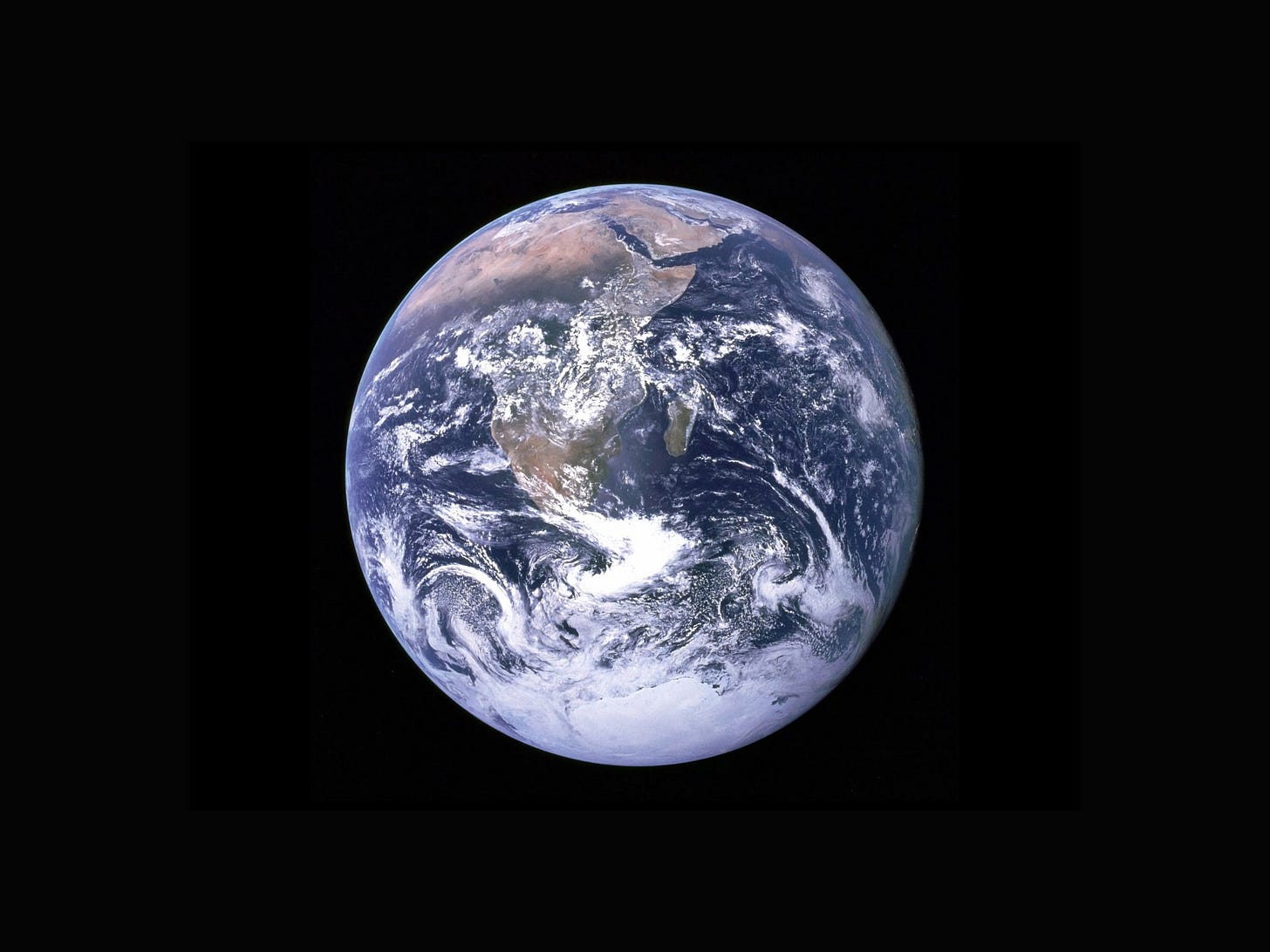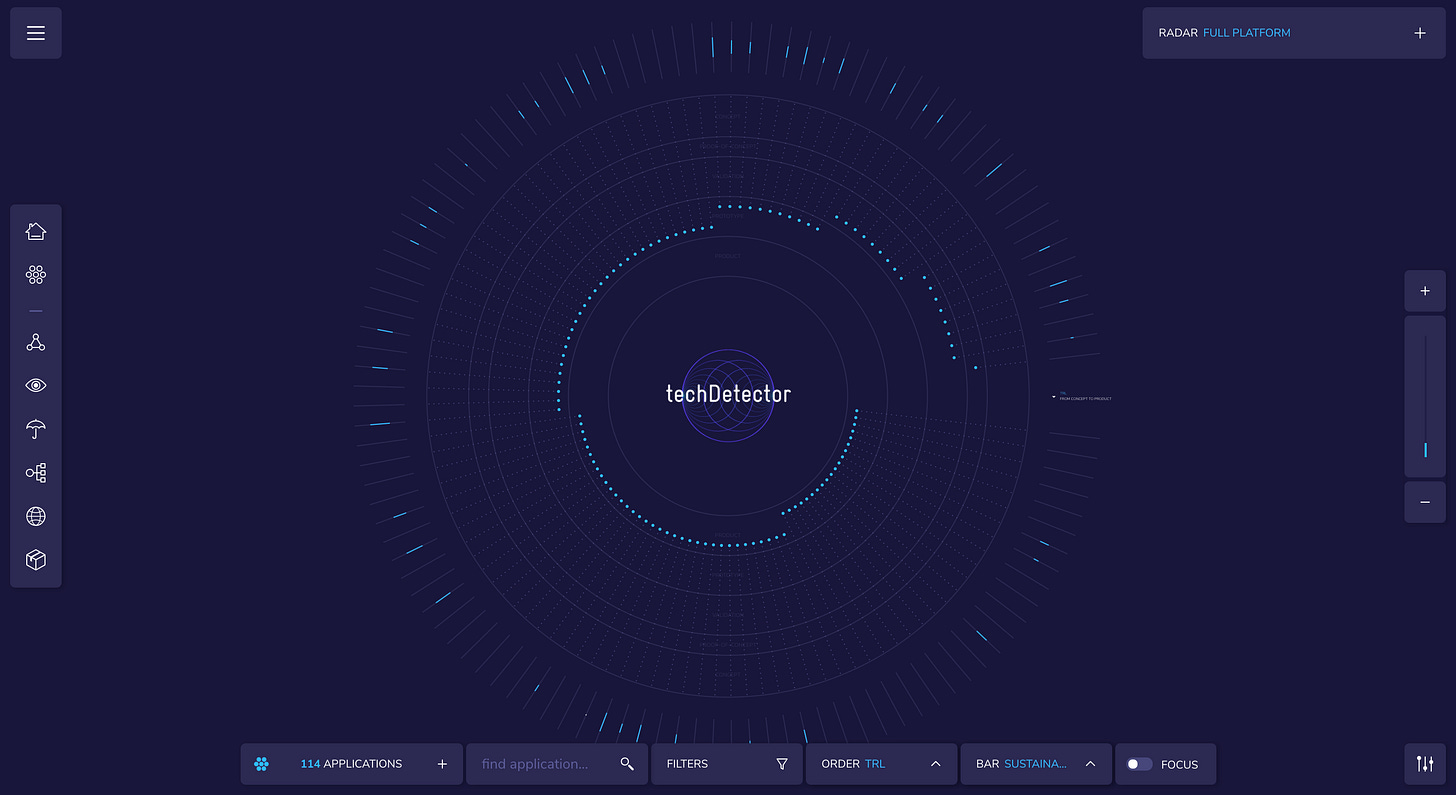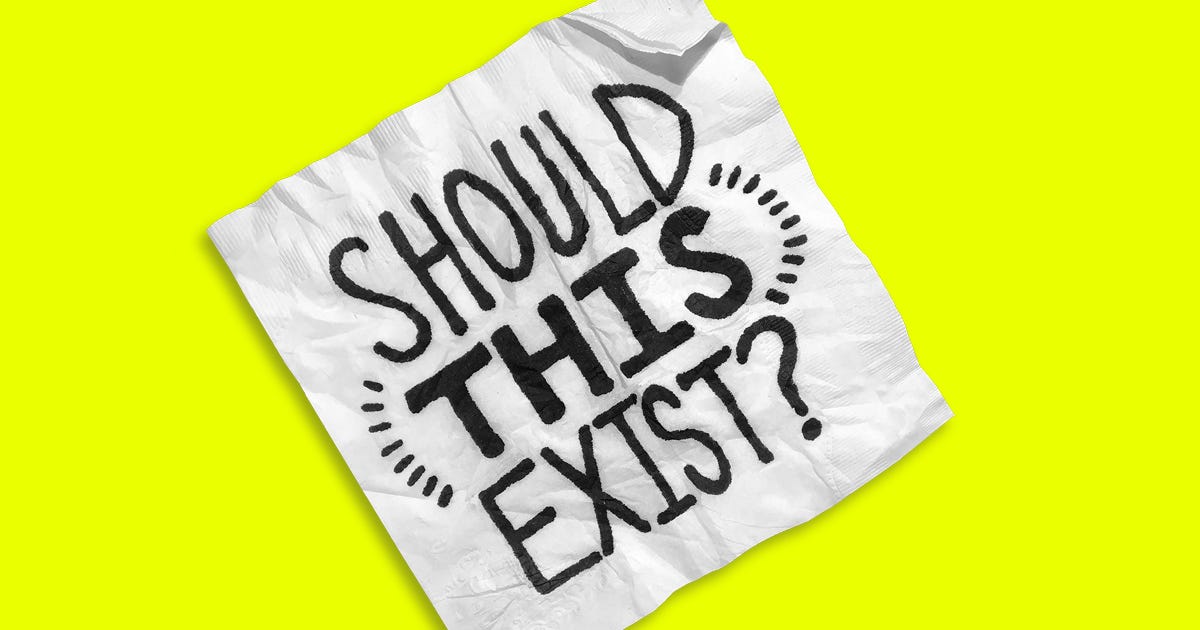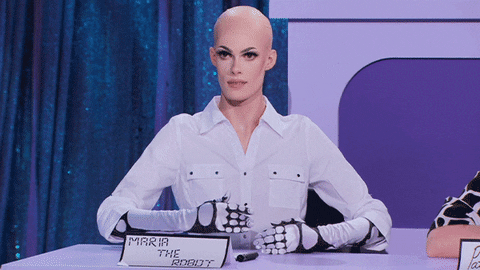🦾✨The Nexialist #0017
Sci-Fi Playlist | Self-Outsourcing Age | Beyond Human-Centered Design | Cozy Futurism | techDetector | Should This Exist? | Filters & Fembots | Art ft. Tech | LOVE DEATH + ROBOTS and more...
Greetings and welcome to my weekly exercise of bringing some serendipitous content for you:
This week I’ll try to do something different. As I started writing this week’s introduction, noticed it was getting a bit too long, so I’ll add this “longer text” as the first reference. You can leave it for later if you want, and feel free to comment on what you think. I hope you enjoy it!
I noticed today’s Nexialist is not so musical, so I’ll leave a playlist I’ve had for a few years with songs that have some kind of sci-fi vibe in the sound or lyrics. Have a listen:
🤖Self-Outsourcing Age
Recently, I started noticing how we might be replicating the economic concept of outsourcing in our personal lives without even realizing it.
With urbanization, many of us outsourced producing our food and clothes generations ago, and that was normalized and industrialized, with its toll on the environment. We also outsource our cooking when we order food or buy it ready. Frequently we do so to a corporation, especially if we live in urban areas.
Now, it’s becoming possible to outsource our decisions to algorithms and AI and our memory to the cloud. We might even be outsourcing our pleasure to pornography and our confidence to likes and filters. When we read something and that quickly becomes our opinion, with no reflection, are we outsourcing our critical thought?
How tech-dependent are we becoming if we outsource those things that make us human? What’s left inside when we outsource everything?
Connecting to last week's issue when I approached playfulness, I recently learned that a lot of kids enjoy watching videos of other kids playing (not by coincidence, one of the best-paid Youtubers is a 9-year-old that does toy unboxing videos). Is even playtime being outsourced? How will that affect these future adults?
In 2019 I started an informal project (or an intention list) called the “autonomy project.” It wasn't something very structured, but I started listing where I wanted more independence. When my beard was longer I had to learn how to take care of it at home, since the barbershop prices in Amsterdam are quite high. Youtube helped me learning how to do that. In Amsterdam, biking gives me a great sense of autonomy. Coming from São Paulo where you depend on means of transportation to go places, biking makes me feel independent. This intention also inspired me to get more acquainted with the kitchen and cook more. Where do I watch and learn new recipes? Youtube.
I’m not saying we should quit technology, run to the mountains and start doing everything ourselves, but I'm thinking about how to balance technology in my life, and how to use it mindfully, as tools that support me. My autonomy project now is in its technological phase, which is making me keep in check how much of my life I'm outsourcing, who I'm outsourcing tasks to, and what I'm doing with that free time/energy that this gives me.
Just some food for thought.
🌍Beyond Human-Centered Design
‘In the pursuit of frictionless user experience, we have prioritised usability over everything else — including our health, and the well-being of our planet.’
…
We do not want to discard human-centered design altogether. We do, however, want to move beyond it. ‘We should not see people and the planet in competition with each other’, says Johanna Fabrin. ‘Humans should be part of the equation, but not at the expense of everything else. We can only create a good life for people if we create a good life for the planet.’
We are in a climate crisis today because we have been putting people at the centre for far too long. So, what steps can we take to remedy this? We have designed our way into this mess — can we design our way out of it?
We have to rethink the relationship between humans, technology, and our planet. It is no longer a linear relationship; rather, it has become a complex system of interdependencies. For example, when we are designing an app such as car-share, home-share or food delivery, we are also designing complete social and environmental systems that encompass hundreds of restaurants, thousands of delivery people, and a large back-end infrastructure that includes kitchens, packaging — and yes, a tremendous amount of waste. How can designers approach this task with a people-planet-centric mindset? ‘As designers, we have to be aware that we are designing ecosystems of living and non-living elements that relate to each other,’ says Campbell. ‘And to create an ecosystem is a huge task, and a huge responsibility.’
I’m not a designer but “human-centered design” has been showing up so many times in reports and presentations that I was used to it. This point of view of a People-planet approach adds such an important layer to how we think of solutions moving forward.
🦾Cozy Futurism
… cozy futurism, as in the original tweet, starts not with technology but with current problems and human needs and looking at how those could be solved and met; so you could imagine societies where poverty is absent, housing is affordable, cities are architecturally pleasing (There is only so much glass and steel one can take before yearning for good old bricks, stones, and wood), economies are environmentally sustainable, and all disease is cured. Then you work backwards from there to the technologies, cultural shifts or policy changes needed to get there.
Cozy futurism is not necessarily less ambitious than cool sci-fi futurism; in fact by the time we get to Mars there will still be homeless living among developed countries back on Earth. Nor is cozy futurism just about institutional or cultural solutions. Fusion reactors and anti-aging therapies are key enablers of a cozy future. With cozy lenses on, when envisioning that future you would be thinking of what those advances enable, how they improve our lives; rather than on the technical advances themselves. When we fully swap gas and oil plants for nuclear and renewables, going to visit power plants won't probably be an activity that will be commonly practiced, so when thinking of new things you'll be able to do, you won't be thinking of higher order, distant, capital goods, but of consumer goods. This is perhaps another way of looking at the cozy vs sci-fi distinction, the former emphasizing consumer goods and how specific human needs are met, rather the technical advancements required to manufacture distant enablers of those consumer goods.
As much as I get excited with cool sci-fi technologies, now that I work with trend forecasting and emerging technology, I have learned to be more critical of the social, political, and environmental impacts of emerging technologies. Turns out, today it’s more exciting for me to see technologies that can help us build a better future for everyone. Loved learning this new term, should I add Cozy Futurist to my LinkedIn?
🔮TechDetector
techDetector is an analytical platform that offers strategic insights into the impact of emerging technologies on sustainable development. The platform combines qualitative knowledge with quantitative metrics to continuously monitor the development of emerging technologies, covering innovation in virtually all industries and sectors.
I am super-proud to be a researcher/collaborator on such a necessary project with Envisioning and Deutsche Gesellschaft für Internationale Zusammenarbeit (GIZ), so I have to show it off to my dear readers. It is great to work on something that you believe in, with a competent team and that makes you learn, developing creativity and critical thought about futures thinking and emerging technologies. Take a look at the platform here.
🙋Should This Exist?
Hosted by Caterina Fake, Should This Exist? is a show that takes a single technology and asks: What is its greatest potential? And what could possibly go wrong?
With fascinating guests and great stories, we’ll talk about astounding technologies. Like robots who could become our caregivers in old age. Video games that aim to replace the SAT and reveal our hidden potential. Virtual reality that could heal our trauma and rewire our brains.
In this podcast, Caterina Fake teaches us how to have a more critical approach to technology. She interviews the creators of some products and services and brings other experts from different areas to have a conversation. It is nice to see their points and counterpoints and think about how technologies can develop, for the good or for the bad.
🤳Filters & Fembots
Recently I used a filter that puts tattoos on my face and neck. It also did some tweaking to my face, which I actually liked. I’m not used to using those filters, even the more silly ones. Since then, I have been thinking a lot about a neck tattoo. That same week I received the link for How beauty filters took over social media, which felt familiar. Imagine how this technology impacts younger generations’ perception of themselves. It reminded me of the video above, which changed forever how I see the Kardashians and this more “plastic” side of the influencer world.
This Calvin Klein ad campaign with Miquela really struck me when it came out. It is still surreal to me to see this kind of interaction. It feels like the line between virtual and real is blurrier than ever.
Also read: The Rise of the Social Media Fembot - The New York Times
Is the next wave of influencers digital? - JWT Intelligence
🔮Art ft. Tech
On The Nexialist #1, I brought a good reference (Foresight in Hindsight) on how artists predict technological innovations better than any other area. Nam June Paik is a good example of that with predictions such as The Internet or Video Art. You can read more here.
Many of Paik’s early artworks were inspired by Zen Buddhist concepts. He may have personally believed the Buddhist idea that everything in the world is connected—even things as diverse as electronics and plants.
Paik also believed that we should find fulfilment in art and culture, rather than consuming natural resources.
In 1980, when he was asked, ‘If you were elected president, how would you solve the world’s problems?’, he replied that he would ‘make oil obsolete’ and use information as an energy source.
Globally, we are using too much fossil fuel but not getting enough spirituality, he advised.
Read: The future according to Nam June Paik, TATE
🫂Gen Z Style
I remember always finding these i-D videos super cool. The A-Z of Dance and of Slang were my favorites. It’s interesting to see gender as such a big pillar of the style of Generation Z and actually being familiar with most of the references they used.
👾LOVE DEATH + ROBOTS VOL.2
Season 1 of LOVE DEATH + ROBOT was such a treat, and the second one appears to be even better. If you haven’t watched it yet, I recommend it. It’s so magical to have this kind of content being made. Add May 14th to your calendar. “The NSFW animated anthology returns with a vengeance. Naked giants, Christmas demons, and robots-gone-wild… Consume irresponsibly.”
❤️If anything made your brain tingle, click like and don't hesitate to share it with the world. It helps The Nexialist to reach more curious minds. See you next week!🦦
🫀If you enjoyed this newsletter, please share it with your friends. If someone amazing sent it to you, tell them you love them, and you can subscribe at thenexialist.substack.com. If you want to know what a Nexialist is, click here. If you want to introduce yourself or give me any feedback, I would love to hear from you. Drop me an e-mail or say hi on LinkedIn or Instagram.










Hi, I'm here now, I read everything, I saved some links of sites with your tips, I recommended the newsletter to some friends and, above all, I loved it! congratulations and keep walking.